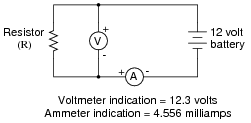Ohms Law Calculations Worksheet
Many students struggle with understanding and applying Ohm's Law when it comes to electrical circuits. If you're looking for a practical and efficient way to reinforce your knowledge on this subject, an Ohm's Law calculations worksheet may be just what you need. These worksheets provide targeted practice exercises that focus on the key concepts and formulas involved in Ohm's Law, allowing you to enhance your understanding and proficiency in this area.
Table of Images 👆
- Ohms Law Worksheet Answers
- Ohms Law Series and Parallel Circuits
- Electric Circuits Worksheet Answers
- Ohms Law Practice Problems Worksheet
- Power and Ohms Law Worksheet
- Ohms Law Power Wheel
- Ohms Law Voltage Current Resistance
- Simple Series Circuit Voltage Drop
- Ohms Law Lab Report Graph
- Ohms Law Calculator
- Series Parallel Circuit Problems Worksheet
- Complete Electrical Circuit
- Ohms Law Worksheet
More Other Worksheets
Kindergarten Worksheet My RoomSpanish Verb Worksheets
Cooking Vocabulary Worksheet
DNA Code Worksheet
Meiosis Worksheet Answer Key
Art Handouts and Worksheets
7 Elements of Art Worksheets
All Amendment Worksheet
Symmetry Art Worksheets
Daily Meal Planning Worksheet
What is Ohm's Law and what does it represent?
Ohm's Law states that the current flowing through a conductor between two points is directly proportional to the voltage across the two points, and inversely proportional to the resistance of the conductor. It is represented by the equation V=IR, where V is voltage, I is current, and R is resistance. Ohm's Law is a fundamental principle in electrical engineering and physics, providing a simple way to calculate the relationship between voltage, current, and resistance in an electrical circuit.
How is voltage defined in Ohm's Law?
Voltage, in the context of Ohm's Law, is defined as the potential difference or electrical pressure that drives the flow of electric current in a circuit. It is represented by the letter V in the formula V = I * R, where V is voltage, I is current, and R is resistance. Ohm's Law states that voltage is directly proportional to current and resistance in a circuit.
How is current defined in Ohm's Law?
Current is defined in Ohm's Law as the flow of electric charge through a conductor, measured in amperes (A). Ohm's Law states that the current flowing through a conductor is directly proportional to the voltage applied across it and inversely proportional to the resistance of the conductor, and can be calculated using the formula I = V/R, where I represents current, V represents voltage, and R represents resistance.
How is resistance defined in Ohm's Law?
Resistance is defined in Ohm's Law as the property of a material that determines how much it opposes the flow of electric current. It is represented by the symbol "R" and is measured in ohms. According to Ohm's Law, resistance is equal to the voltage across a material divided by the current flowing through it, expressed as R = V/I.
What is the formula for Ohm's Law?
Ohm's Law is typically written as: V = I * R, where V represents voltage, I represents current, and R represents resistance.
How is voltage calculated using Ohm's Law?
Voltage can be calculated using Ohm's Law by multiplying the current flowing through a circuit by the resistance in that circuit. The formula for Ohm's Law is V = I * R, where V represents voltage in volts, I represents current in amperes, and R represents resistance in ohms. By rearranging the formula, you can calculate voltage by multiplying the current by the resistance in the circuit.
How is current calculated using Ohm's Law?
Current is calculated using Ohm's Law by dividing the voltage (V) by the resistance (R). The formula is I = V/R, where I is the current in amperes, V is the voltage in volts, and R is the resistance in ohms. This formula helps to determine the amount of current flowing through a circuit based on the voltage applied and the resistance in the circuit.
How is resistance calculated using Ohm's Law?
Resistance can be calculated using Ohm's Law by dividing the voltage (V) across a circuit component by the current (I) flowing through it. The formula is R = V/I, where R represents resistance in ohms, V is voltage in volts, and I is current in amperes. This relationship allows you to determine the resistance of a component based on the voltage drop across it and the current flowing through it.
In which units are voltage, current, and resistance typically measured?
Voltage is typically measured in volts (V), current is typically measured in amperes (A), and resistance is typically measured in ohms (?).
How can Ohm's Law calculations be applied in practical electrical circuits?
Ohm's Law calculations can be applied in practical electrical circuits by helping to determine the relationship between voltage, current, and resistance. By using the formula V=IR (where V is voltage, I is current, and R is resistance), engineers and electricians can calculate the correct values needed for designing, analyzing, and troubleshooting electrical circuits. This can help ensure that components are properly sized, circuits are functioning as intended, and safety standards are met in various electric systems.
Have something to share?
Who is Worksheeto?
At Worksheeto, we are committed to delivering an extensive and varied portfolio of superior quality worksheets, designed to address the educational demands of students, educators, and parents.





























Comments